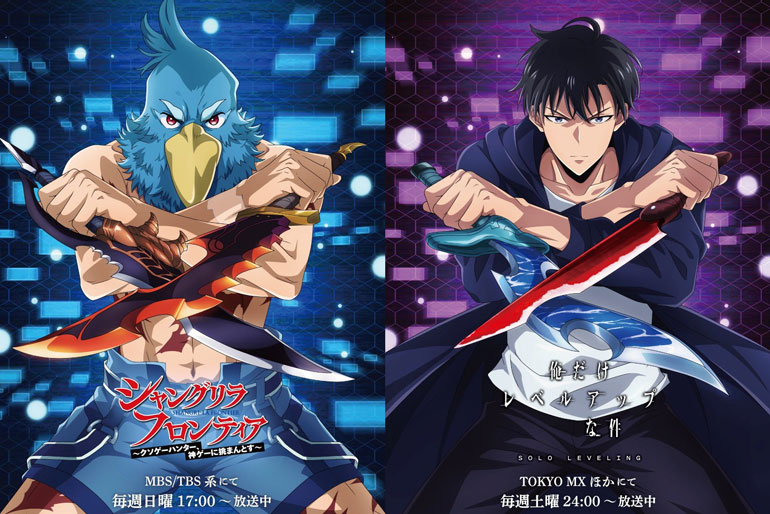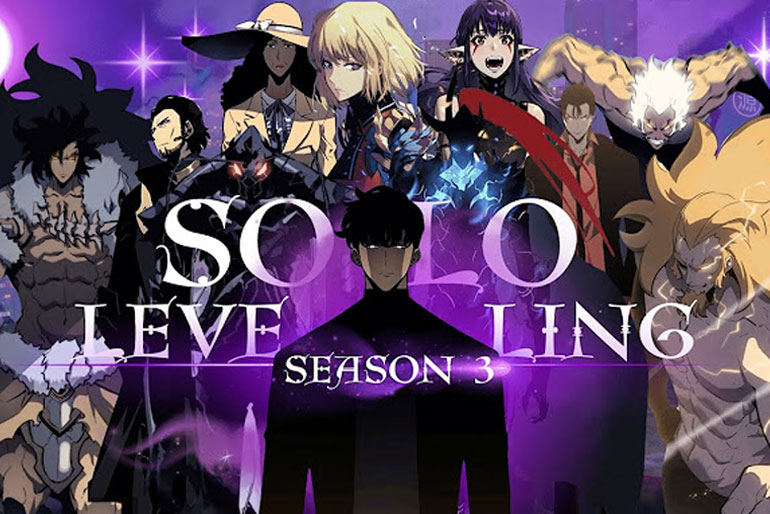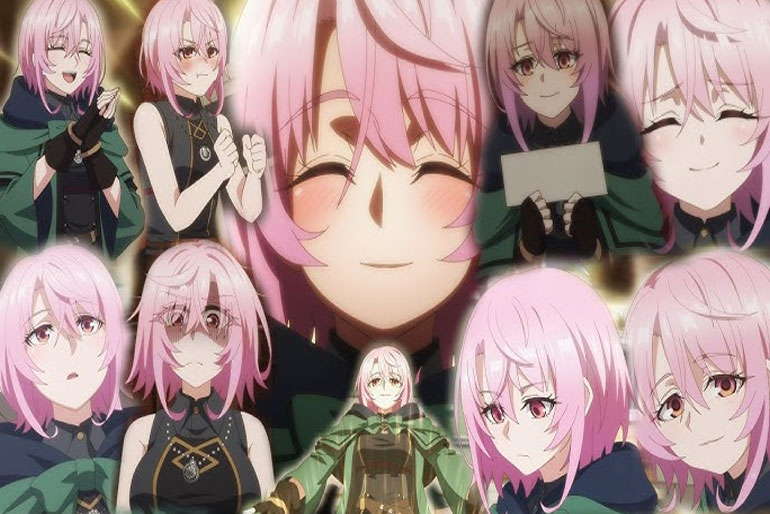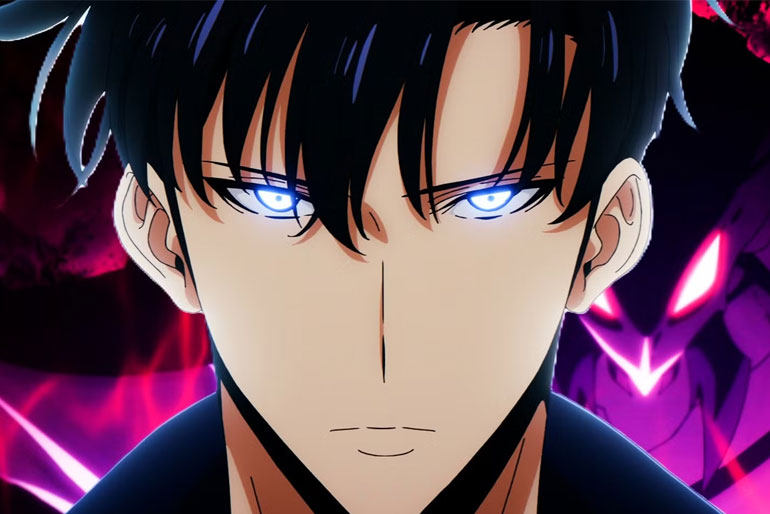Stories that center on characters leveling up in fantasy or game-like worlds have become incredibly popular in recent years. Two series that stand out in this category are Solo Leveling and Shangri-La Frontier. Although both involve growth, adventure, and battles, each has its own unique flair. Fans of exciting storylines, memorable protagonists, and thrilling twists often debate the merits of Solo Leveling vs. Shangri-La Frontier. Let’s take a look at these two series and see what sets them apart, what they have in common, and why readers often talk about them in the same breath.
Basic Premise of Each Series
In the ongoing discussion of Solo Leveling vs. Shangri-La Frontier, it’s important to highlight the unique elements each series brings to the table.
Solo Leveling
Solo Leveling began as a Korean web novel written by Chugong before it was adapted into a webtoon (or manhwa). The story follows Sung Jinwoo, who starts out as a very weak hunter in a world where gates to dangerous dungeons have appeared. When these gates open, monsters spill out, and hunters must fight to protect ordinary folks from potential disasters. Since he is labeled the weakest, most underestimate Sung Jinwoo. However, one fateful event grants him a special system that allows him to level up and gain power in ways no one else can.
A big appeal of Solo Leveling lies in its systematic approach to growth. Sung Jinwoo gains skills, completes quests, and faces bosses that test his limits. As he becomes stronger, the nature of the threats he encounters escalates, and the story moves from simple dungeon raids to more cosmic-scale challenges. Action scenes, illustrated in vibrant detail in the webtoon version, keep readers on the edge of their seats. Plus, the sense of “starting from the bottom” and working your way up resonates with many. It’s a power fantasy with a strong emotional backbone, because Sung Jinwoo genuinely cares about the people close to him and is not just out to show off his strength.
Shangri-La Frontier
Shangri-La Frontier is a Japanese manga (originally a web novel) about a passionate gamer, Rakurou Hizutome, who goes by the in-game name Sunraku. He is known for having a taste for “trash games,” meaning games that are poorly made and filled with bugs. Because he spends so much time dealing with low-quality titles, Sunraku develops top-tier reflexes and strategy skills. Eventually, he tries a cutting-edge virtual reality massively multiplayer online role-playing game (VRMMO) called Shangri-La Frontier, which is known for its high quality and enormous player base.
Unlike many other series in the VR setting, Shangri-La Frontier blends humor, action, and a deep fascination with gaming culture. The protagonist does not simply power up in a traditional sense; he cleverly uses the skills he sharpened playing glitchy, irritating games to thrive in a fair, well-designed environment. While there are still powerful monsters to fight and quests to tackle, Sunraku approaches them in an often comical, creative way. This focus on actual gaming mechanics, along with comedic twists, sets it apart from many of its peers.
Setting and World-Building
Both Solo Leveling and Shangri-La Frontier feature worlds rife with challenges, but they handle these settings in different ways.
Solo Leveling’s Earth with Portals and Magic
In Solo Leveling, the real world changes dramatically when portals linking to dungeons begin to appear. These dungeons are full of monsters, mysteries, and treasures. Hunters, or awakened individuals, step up to safeguard humanity. Society adapts to this change by forming guilds, government partnerships, and an entire economy built around dungeon raids. On the surface, many aspects of daily life remain normal, but behind the scenes, conflicts between guilds and struggles over dungeon rights make it clear that the world has changed forever. Sung Jinwoo’s growth is closely tied to these dungeons. He gains experience, loot, and new abilities inside them. Over time, greater threats emerge. The sense of escalating danger keeps the story exciting, ensuring that the tension never truly fades. The setting involves politics between nations over dungeon resources, growing mystery about where these gates come from, and a looming threat that might be beyond everyone’s comprehension.
Shangri-La Frontier’s VRMMO Universe
Shangri-La Frontier explores an entirely digital world, which players enter using advanced VR technology. This game is considered the pinnacle of virtual reality gaming, with breathtaking landscapes, diverse creatures, hidden zones, and in-depth character customization. Unlike many other VR-based stories, Shangri-La Frontier does not plunge its players into a life-or-death scenario if they lose a fight. Instead, it focuses on the joys and struggles of gaming itself. Sunraku’s journey involves discovering new areas of the game, tackling epic quests, and facing unique in-game bosses. While typical VR stories often involve dire stakes if the protagonist dies inside the game, Shangri-La Frontier is more about the personal challenge, the thrill of exploration, and the bond formed between players who share the same virtual universe. Readers get a lighthearted, comedic perspective on leveling up and facing monsters, balanced with enough tension to make battles and plot progress exciting.
Main Characters
Sung Jinwoo (Solo Leveling)
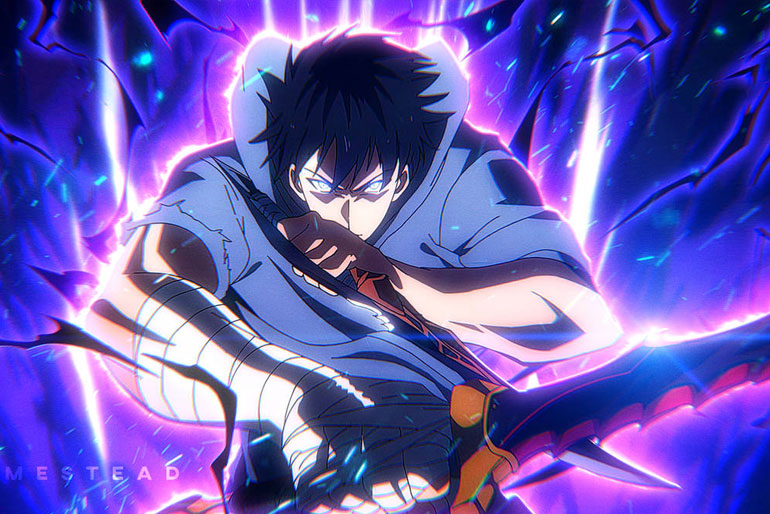
Sung Jinwoo is introduced as someone with minimal strength, ridiculed by others, and barely able to defend himself. His evolution from this weak point to one of the most powerful figures in the series is a central element. Not only is he physically outmatched at the start, but he also grapples with self-doubt. One major turning point changes his life forever, giving him a system interface that records stats, skill levels, and quest objectives. With each victory, he grows at an astonishing rate.
What makes Jinwoo compelling is his combination of humility and ferocity. He does not turn into a cold, arrogant conqueror. Instead, he remains focused on protecting those dear to him. This duality—caring friend and unstoppable hunter—makes him stand out among many fantasy protagonists. Readers cheer him on because his journey proves that effort, bravery, and determination can lead to incredible outcomes.
Rakurou “Sunraku” Hizutome (Shangri-La Frontier)
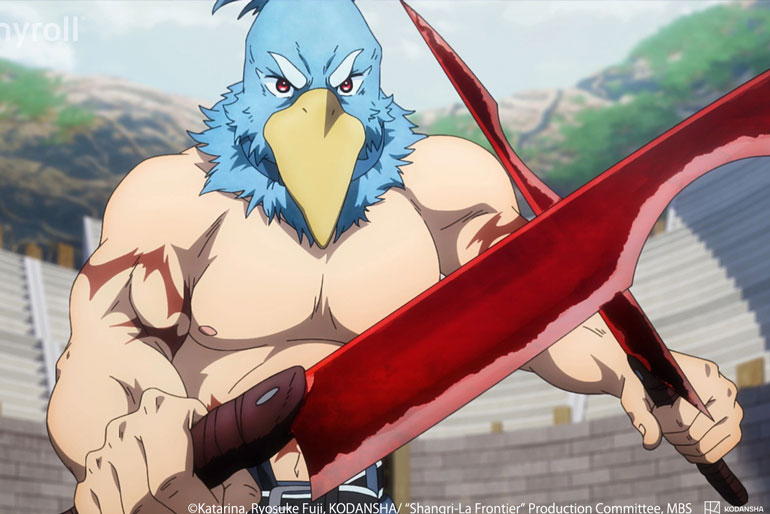
Sunraku, on the other hand, is a cheerful, free-spirited gamer who enjoys overcoming challenges for the fun of it. He is used to badly designed games that frustrate most players, so a well-crafted title like Shangri-La Frontier feels like paradise for him. In many ways, he approaches obstacles with a comedic flair. He is not above messing around or experimenting with strange strategies, which often pay off in unexpected ways.
While he can be a bit of a goofball, Sunraku also demonstrates deep knowledge of gaming mechanics. He knows how to exploit openings, identify patterns in boss behavior, and come up with creative solutions when a straightforward approach fails. Part of the charm lies in his enthusiasm. He is not driven by revenge or an apocalyptic threat. Instead, he simply loves playing challenging games and wants to push his limits within this virtual world.
Supporting Characters
Both series feature memorable side characters who enrich the story:
- Solo Leveling introduces other hunters, guild masters, and government officials who either ally with or oppose Sung Jinwoo. Some provide comic relief, some add emotional depth, and some serve as rivals that push Jinwoo to become even stronger. Each character also reflects different parts of a society changed by the existence of magical gates.
- Shangri-La Frontier shows other players who become friends, competitors, or helpful guides for Sunraku. In the world of VR gaming, these individuals add color to Sunraku’s adventures. From skilled players who challenge him to cheerful allies who fight alongside him, the game’s large community has many personalities. Even non-player characters (NPCs) have distinct traits, which makes them feel more alive than just lines of coding.
Tone and Style
Tone is a key difference between the two stories:
- Solo Leveling can be quite intense. The sense of danger is always lingering, as fights against monsters often determine whether whole cities survive. The art in the webtoon has bold lines, dramatic shading, and grand scale. Characters bleed and get hurt; the stakes are real and sometimes grim. That does not mean there is no humor, but most of the series keeps readers on the edge of suspense, hoping the protagonist can overcome the next terrifying threat.
- Shangri-La Frontier has a lighter tone overall. There are serious moments during boss fights and certain story arcs, but much of the time, Sunraku’s carefree attitude sets a more humorous stage. You see jokes about strange mechanics, playful banter among players, and comedic commentary about gaming culture. That being said, the story still includes epic battles and dramatic situations. The game’s larger plot unfolds and presents challenges that test even the most hardened gamers. However, the overall vibe is more fun-loving and comedic compared to Solo Leveling’s darker themes.
Exploration of Power Fantasy
Both series delve into the theme of acquiring power, but they do so in different ways:
Solo Leveling’s Rapid Power Escalation
Sung Jinwoo’s strength rises quickly thanks to the special system he obtains. This is a classic power fantasy with plenty of moments where readers cheer as he topples previously unbeatable foes. The story keeps you hooked by unveiling new levels of abilities and more intimidating villains. By the latter half, the scope is enormous, involving international politics, mythical creatures, and near-godlike powers.
Shangri-La Frontier’s Skill-Based Growth
While Sunraku also gains power, it is framed differently. He has no system that magically boosts his stats. Instead, he is already a highly skilled gamer from dealing with subpar titles that required patience and cunning to play. When he enters the polished world of Shangri-La Frontier, it feels like taking off weights. Now he can unleash his full gaming prowess without the hindrances found in glitchy, buggy games. The power fantasy here is rooted in skill, intelligence, and creativity. Sunraku’s growth is more about learning new in-game abilities, forging relationships with strong players, and overcoming well-designed bosses with strategy rather than raw might.
Themes
Solo Leveling Themes
- Individual Determination: Sung Jinwoo’s journey is about self-improvement under extreme conditions.
- Responsibility and Protection: As he grows stronger, he must decide how to use his power to shield others.
- Mystery and Destiny: There are secrets tied to the gates, the system he possesses, and the broader fate of the world.
Shangri-La Frontier Themes
- Passion for Gaming: The entire story celebrates the joy and challenges of gaming culture.
- Friendship and Camaraderie: Characters bond through guilds, teamwork, and shared adventures in a virtual environment.
- Exploration and Discovery: Sunraku constantly uncovers new parts of the game, hidden bosses, and tricky quests, echoing the thrill of diving into a vast, unknown realm.
Artwork and Visual Appeal
Solo Leveling’s Art
The webtoon adaptation boasts dynamic action scenes, vibrant use of color, and strong character designs. Whenever Sung Jinwoo summons his shadow army or unleashes a new ability, the panels burst with energy. Monsters look intimidating, and backgrounds capture the eerie vibe of dangerous dungeons. This visual intensity adds to the sense of danger. Even outside the dungeons, the urban landscapes and interiors reflect a modern world that has adapted to the presence of hunters.
Shangri-La Frontier’s Art
The manga’s style is more playful, matching the fun approach of the story. Character designs often emphasize expressions that highlight comedic moments. However, when battles begin, the art can be just as intense as in many action mangas. Large bosses, dramatic angles, and fluid motion keep readers engaged. The depiction of the VR world is imaginative, showing diverse terrains and creatures that reflect the game’s high-end design.
Target Audience and Appeal
Both series attract slightly different audiences, though there is overlap:
- Solo Leveling might appeal more to those who enjoy dramatic, tension-filled stories with a powerful protagonist who faces high-stakes threats. If you like intense fights, a dark fantasy edge, and continuous escalation in power levels, Solo Leveling will likely scratch that itch.
- Shangri-La Frontier is often recommended to readers who enjoy gaming culture, comedic storytelling, and a character whose abilities come from skillful tactics rather than a mysterious system. If you appreciate lighthearted banter, creative battles, and a strong sense of adventure in a VR setting, Shangri-La Frontier might be a perfect pick.
That said, many fans enjoy both. Some days, a person might crave the gritty suspense of Solo Leveling, while on others, they might want the lively humor and strategic flair of Shangri-La Frontier. Each offers a unique spin on leveling up and battling powerful foes.
Adaptations and Community Reception
- Solo Leveling has gained worldwide fame. The webtoon soared in popularity for its slick art and fast-paced story. It is often praised for its addictive narrative. Talks and announcements about an anime adaptation have further fueled its popularity, drawing in fans from both manga and anime communities. Many also discuss the possibility of a live-action adaptation, though nothing is set in stone. Merchandise, fan art, and online discussions flourish, making it a true global phenomenon.
- Shangri-La Frontier has seen its popularity rise as well. It started as a web novel, got a manga adaptation, and has garnered a loyal fan base among readers who love gaming-themed adventures. News of an anime adaptation has surfaced, stirring excitement in the community. Fans enjoy the comedic take on the VRMMO setting. The possibility of seeing Sunraku’s antics animated or hearing how certain characters sound in voice acting is something supporters look forward to.
Overall, both series have shown that the “leveling up” genre has a large audience craving fresh takes on classic tropes. The devoted fan bases for each series reflect the stories’ strengths: Solo Leveling for thrilling escalation and Shangri-La Frontier for lighthearted gaming fun mixed with robust action.
Pacing and Structure
Solo Leveling’s Steady Progression
The story typically follows an arc-based structure: Sung Jinwoo enters a new challenge, faces danger, and emerges stronger. As arcs progress, revelations about the greater story unfold. The pacing is brisk, with only brief slowdowns in-between major conflicts. Some have criticized it for being repetitive at points—go into a dungeon, fight, gain experience, repeat—but fans of the power fantasy aspect consider that part of its charm. Every arc feels bigger and more threatening, culminating in massive confrontations.
Shangri-La Frontier’s Quest-Driven Narrative
Because it’s set in a VRMMO, Shangri-La Frontier often follows the structure of quests. Sunraku might decide to tackle a legendary boss, unlock a hidden quest line, or explore an undiscovered area. The pacing is slightly more relaxed, as Sunraku takes time to chat with friends, experiment with new items, or test out interesting game mechanics. Plot threads can diverge, reflecting how gamers often tackle side quests or try out expansions. The comedic timing keeps it entertaining, and the big moments are worth the buildup, but it might feel less urgent than the life-or-death scenarios of Solo Leveling.
Character Development
- Sung Jinwoo: In Solo Leveling, he starts off meek and uncertain, but each victory boosts his confidence. While he becomes more self-assured, he never loses touch with his softer, protective side. The system’s demands also force him to confront ethical dilemmas. Is it right to use such extraordinary power for personal gain, or should he serve a greater good? This inner tension deepens as the story unfolds, giving readers more than just fights to enjoy.
- Sunraku (Rakurou Hizutome): In Shangri-La Frontier, he starts already skilled, though he has not explored a high-level game that meets his interests in a long time. His growth lies in discovering new ways to apply his reflexes and resourcefulness. Social bonds also change him; playing alongside others helps him appreciate camaraderie. He is not just a solo player who only cares about personal achievements. He learns to collaborate, share strategies, and even pass on knowledge to friends.
Secondary characters also get development in both series. Readers enjoy seeing how Jinwoo’s allies adapt to his rising power and how Sunraku’s fellow players respond to his eccentric play style. These relationships help anchor the main characters and ensure they do not exist in a vacuum.
Antagonists and Conflict
- Solo Leveling’s Foes: Ranging from dungeon bosses to traitorous hunters, the opposition faces Sung Jinwoo at every turn. As the story progresses, it hints at much larger, otherworldly threats. This keeps tension high. Readers see clashes not only in raw power but also in strategy, especially once Sung Jinwoo starts encountering beings that rival him in ability.
- Shangri-La Frontier’s Enemies: The “enemies” Sunraku faces are mostly in-game bosses, legendary monsters, or tricky quest-related villains. He also comes across formidable players whose goals may conflict with his. Unlike Solo Leveling, which often involves genuine life-threatening encounters, Shangri-La Frontier has a safer real-world environment. Losing to a boss means rethinking strategies or grinding levels, not actual death. However, the emotional investment is still there. The story successfully conveys how real the stakes can feel to passionate gamers. Failure can mean lost progress or missing out on rare items and opportunities.
Use of Humor
One noticeable difference is the approach to humor:
- Solo Leveling does have comedic beats, usually from side characters who react to Sung Jinwoo’s sudden power gains or from certain awkward situations. But the overall tone leans serious. The entire hunter system, the presence of dangerous monsters, and the looming threat of global disaster do not create space for much lighthearted comedy on a frequent basis.
- Shangri-La Frontier regularly uses humor. Sunraku’s commentary on gaming tropes, his unorthodox strategies, and the exaggerated reactions from other characters keep things light. Even some boss battles have comedic moments, especially when Sunraku tries off-the-wall tactics. This comedic layer does not undermine the excitement of the fights; it just shifts the tone to something more playful and occasionally self-aware.
Which One Is Right for You?
Choosing between Solo Leveling and Shangri-La Frontier depends on personal tastes. Some points to consider:
- Do you prefer a dark, high-stakes story with a protagonist who evolves from the weakest to possibly the strongest around? Then Solo Leveling might be your first stop.
- Are you a fan of gaming culture, comedic twists, and a hero who relies on skill rather than a supernatural system? Then Shangri-La Frontier could be just the series you are looking for.
In reality, both have enough appeal that many readers enjoy them for different reasons. They each exemplify the thrill of leveling up, fighting powerful foes, and pushing boundaries. Both have strong artwork and pacing that will keep you engaged. The main distinction is in how they approach the concept of growth and how serious or comedic the tone is.
Fan Theories and Speculation
- Solo Leveling: Fans often debate the nature of the system that grants Sung Jinwoo his powers. Is it purely a gift, or does it come with strings attached? Questions also arise about the origins of the gates, the identity of greater beings behind them, and how Jinwoo’s power compares to the top hunters worldwide. Speculation is part of the fun, as the series slowly unravels these mysteries.
- Shangri-La Frontier: Discussions typically revolve around hidden bosses, unannounced expansions, and the possibility of special quest lines that might drastically change the game’s landscape. Fans like to predict which glitchy tactic Sunraku might try next. Because the series celebrates gaming, there is a meta aspect to how readers speculate. They wonder if certain events hint at developer secrets within the story or if the game’s world is more than it appears.
Cultural Impact
Both series reflect broader trends in popular culture:
Leveling System Stories
Solo Leveling is part of a wave of Korean webtoons that utilize RPG-like mechanics in a real-world setting. This approach has influenced many new creators. The success of Solo Leveling opened doors for more manhwa to gain international attention, demonstrating the global appeal of well-structured power fantasies with a modern twist.
Gaming Culture and VR
Shangri-La Frontier is an example of how deeply gaming culture has permeated modern storytelling. As VR technology becomes more advanced, the concept of fully immersive virtual worlds seems less like pure science fiction. This story caters to an audience that loves to imagine what gaming could be like at its pinnacle. It also pokes fun at the struggles real gamers face when dealing with broken mechanics or glitchy titles. In that sense, it offers both a celebration and a critique of modern gaming trends.
Potential Cross-Over Appeal
A fun idea that fans sometimes consider is how characters from these two worlds would react if they somehow crossed into the other’s territory. While it is purely speculative, imagine Sung Jinwoo stepping into a VR game with his shadow summons, or Sunraku tackling a real-life dungeon with just his gamer reflexes. It showcases the differences in each setting. Solo Leveling is grounded in a modified real world with actual consequences, while Shangri-La Frontier is more about digital escapism and inventive gameplay. These hypothetical scenarios illustrate how each story’s premise is distinct, even though they share certain leveling-up elements.
Reading Experience
Solo Leveling is often described as binge-worthy. Once you start, the desire to see Sung Jinwoo’s next power-up or the next boss he will face can be quite addictive. The arcs flow into one another without too many breaks. Some arcs build tension over multiple chapters, ending with explosive confrontations.
Shangri-La Frontier, while also binge-worthy, offers a slightly more playful experience. You might find yourself laughing at Sunraku’s antics in one chapter and then rooting for him in a dramatic boss fight the next. The reading experience is akin to watching a skilled but eccentric gamer stream a new title, discovering secrets along the way.
Conclusion
In the realm of action-adventure titles that revolve around leveling up, Solo Leveling and Shangri-La Frontier have carved out their own spaces. Solo Leveling presents a dark, high-stakes world where monsters threaten humanity, and one hunter defies all odds. Shangri-La Frontier offers a more comedic, gamer-focused adventure where clever tactics and a passion for challenges drive the action. Both feature strong protagonists, thrilling battles, and a focus on growth. Yet their tones and worlds are distinct, ensuring each has its own unique flavor.
Whether you prefer the heart-pounding suspense and jaw-dropping power climbs in Solo Leveling or the lively, strategic fun of Shangri-La Frontier, there is a good chance you will find plenty to love in each series. Many readers become fans of both, enjoying them at different times depending on their mood. With potential anime adaptations and ongoing discussions, these stories remain hot topics in the community. They remind us that the concept of leveling up—whether in a game or in a real-world fantasy scenario—has endless possibilities for creative storytelling.
If you are new to either series, consider trying a few chapters of both. You will quickly see what each one brings to the table. And if you end up getting hooked on both, that just means you have discovered two fantastic ways to enjoy epic battles, engaging characters, and that addictive feeling of growth that so many readers love.
